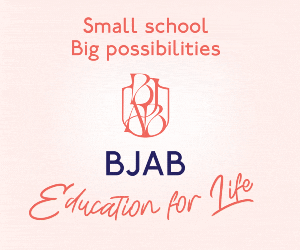In his latest public speaking article Matthew Cossolotto offers the second part of his excellent public speaking tips.
In my new book, The Joy of Public Speaking, I provide readers with a detailed discussion about “Twenty Terrific Tips for Top-Notch Talks.” For this short article, I offer a condensed version of the second half of those twenty tips. My previous article covered the first ten tips
This collection of performance-related tips, techniques, and pointers is necessarily brief – ten tips of the proverbial iceberg, as it were. For a more complete discussion, please see The Joy of Public Speaking (available via Amazon books).
Tip 11: Stand still most of the time, comfortably balanced on both feet.
For most speaking situations, it’s a good idea to stand relatively still most of the time. I’m not saying be a statue, frozen stiff and motionless. But you should avoid shifting your weight from leg to leg. And don’t become a constantly moving target, pacing back and forth across the podium like a caged animal.
Tip 12: Use natural and deliberate hand gestures.
Gesture naturally with your hands. Many accomplished speakers favor gesturing with one hand more than the other, rhythmically punctuating words and phrases with a downward thrust. President Kennedy was famous for this kind of gesture. This is akin to a musician who taps his or her foot in time with the music. Using this kind of gesture is a matter of personal style. Do what is comfortable. But be sure to watch your videotapes and make sure it doesn’t look contrived.
When you’re not using hand gestures, you should just let your arms and hands hang comfortably at your sides in a relaxed manner. Doing so conveys an impression of being poised and in command. Tip 13: Drink water
Tip 13: Drink water
It’s perfectly fine to calmly take an occasional, unhurried sip of water. This serves several purposes. It keeps your vocal cords well lubricated so you can avoid a dry mouth, smacking lips, or scratchy throat. Taking a sip of water also gives you a chance to catch your breath, collect your thoughts, and demonstrate a relaxed command of the situation. Think of it as a poise pause.
Taking a drink of water is also a good way to transition to another point in the speech. In that quiet moment of refreshing reflection, you just might think of something important or humorous to say.
Tip 14: Don’t distract the audience with keys, coins, and jewellery
Be sure to empty your pockets of any jingling items like keys and coins. Remove jewellery that might jangle or clunk while you speak. A big, flashy bracelet or necklace could reflect light and sparkle as you move around or gesture. You don’t want members of the audience thinking about your flashy jewellery instead of your brilliant ideas.
Tip 15: Banish ums and uhs.
Many speakers seem to feel the need to fill every second with sounds. Perhaps because silence makes them nervous. The strings of ums and uhs that too many speakers utter between words rob them of authority and power. These annoying ‘junk sounds’, as I call them, make you appear unprepared and uncertain. They should be avoided as much as possible.
You will become a much more commanding presence on stage – and, for that matter, in media interviews – when you do so.
Tip 16: Use lively language and catchy soundbites
Make an effort to use lively language, memorable words and catchy soundbites. Don’t overload your speech with them. Just drop them in at least a few times. Compelling, colourful language will help ward off audience boredom and help your audience remember your speech and key messages.
A little alliteration and words that rhyme go a long way. Paint word pictures with metaphors, similes and vivid images. Use active, not passive verbs. The key is to make your speech memorable. Lively language and a few catchy soundbites help you do that.
Tip 17: Don’t rush
Take your time. Too many speakers rush through their presentations like they have to catch a plane. Remember that real, live human beings are listening to you. They’re not reading the text. The audience can’t speed listen!
Don’t try to squeeze everything you know about a topic into the allotted time. It’s better to skip less essential material than to race through too much stuff. Time your rehearsals. Then cut out some of the content before you give your talk. A rushed presentation is a form of torture for the audience. It’s a kind of mental waterboarding, drowning the audience with too much content. Have mercy!
Tip 18: You are your best visual aid
Should you use visual aids? It’s an important question. Simple answer: if you use them, don’t abuse them. Many of us have heard the expression: “Death by PowerPoint”. If you want to be kind to your audience, think of yourself as your own best visual aid.
The focus should be on you, the speaker, not on the slides you brought along. If you do use PowerPoint, keep them simple. Edit the words on each slide to a bare minimum. Use pictures and illustrations and cartoons that make a relevant point. Uncluttered charts and graphs can be very useful.
Slides tend to sap a speech of emotion, energy, passion and the power to move and motivate an audience. Yes, slides and other visual aids have a place, but they don’t always fit the moment. They should not be used as a crutch. If you use them, don’t abuse them.
Tip 19: Engage the audience with questions
Whenever possible, pose questions to your audience during a presentation, even if they are rhetorical questions that don’t actually require answers. It’s important to ask questions that encourage audience members to engage, to think, to see if they can come up with the answers and to make sure they are following along with you.
Asking a few questions to ‘check in’ with the audience is a good habit to cultivate. It helps if you occasionally ask things like, Did you get that? Or Is that clear? Or Are you with me?
Tip 20: Cultivate ‘the willingness to be admired’
My former boss, Speaker of the U.S. House of Representatives Jim Wright, made a profound observation about leadership that I believe also applies to speakers. Looking back on his decades-long experience with numerous U.S. presidents and other leaders worldwide, Wright observed that the top leaders, the most effective leaders he had worked with, all possessed an important quality in common. He called it ‘the willingness to be admired’. I think this is a keen insight.
Wright did not mean that these leaders were egotistical in their desire for public attention or admiration. Rather, they were simply willing to put themselves in the spotlight, to occupy centre stage, to serve in the glare of public attention. This willingness to be admired also applies to anyone who mounts a podium to give a speech or presentation. I believe the willingness to be admired is closely associated with being able to experience and appreciate the joy of speaking. The two qualities go hand in hand.
These ten tips – combined with the ten contained in Part I – will help you become a more compelling, confident and joyful speaker. Always speak with joy!
About the Author
A former NATO speechwriter, Matthew Cossolotto is the author of The Joy of Public Speaking (order on Amazon.com). Matthew provides coaching and conducts public speaking workshops and other Personal Empowerment Programs (PEPTalks) in Brussels and beyond. www.ThePodiumPro.com.
Read my previous public speaking article: Twenty Terrific Tips for Top-Notch Talks – Part I







